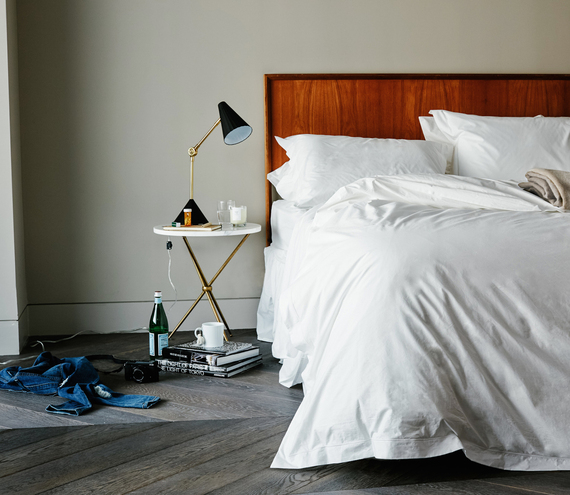Should you count out thread count? Why is Egypt so good at cotton? Don't get short sheeted. Here's the basics on how to buy the best bedding around.
You spend 33 percent of your life in bed (more if you're lucky), so your sheets are an important purchase. But how do you sort through cotton types, weaves, and whatnot to find the bedmate of your dreams?
It boils down to three things: material, how it's made, and thread count--in that order. Here's how to shop smart.
Materials Matter MostThe quality of the materials is priority number one, and natural materials make the best bedding. Think of it like cooking: if you use high-quality ingredients, you experience the difference.
CottonCotton is king, and the "free-range" of fresh bedding is Egyptian cotton. Those naturally occurring fluffy heads are made of fibers, known as staples. The longer the staples, the more resilient, durable, and softer the finished product. Trademark Egyptian Cotton is extra long staple, about 1.5-2.5" long. If a product says "Made of Egyptian Cotton" the blend could contain as little as one percent. Look for something that explicitly says "100 percent Egyptian Cotton."
Pima/SupimaEgyptian isn't the only option. Pima and Supima are American-made long-staple cottons (at least 1.375" long staples). Supima is certified through a non-profit organization to assure its quality and traceability.
LinenHere fibers are made from flax plants, making an exceptionally strong and absorbent finished product. Linen bedding is considered particularly cool and comfortable, offering what some attest is the best sleep around despite its wrinkly tendencies.
Bamboo and TencelWhile fabrics like bamboo and tencel are on the rise, the processes used to create them are still being regulated, and oftentimes can be extremely chemically-intensive. These natural materials will never naturally perform as well as cotton.
The best advice--be aware of what you are purchasing. Check the label to ensure you know where your materials are coming from--and go for the best option you can afford.
Give It a Hand: How It's Made The next step: cotton is combed, to ensure that all the fibers are facing the same way (and that any outliers are removed). Then the fibers are spun into threads, which are woven, sewn, dyed, and finished to make your sheets. Look to the pros, like Italian manufacturers who tend to know the business. Between their heritage, understanding of the process and the fact that they often work in smaller quantities (so they can recognize outliers faster), they are an ideal manufacturer.
Sheets are usually available in one of two weaves: - Percale is woven one-over-one-under, creating a smooth and crisp weave. Percale allows more air to flow through, which is why it has a breathable, cool-to-the-touch feel. - Sateen is woven four-by-one, creating a silky feel. The densely woven fabric tends to trap heat and drape closer to the body, making it a good choice in the winter.
Threadcount Counts: But Not as Much as You ThinkFormerly, threadcount was the main barometer, with higher threadcount equated with higher luxury. The truth: it matters, but only in a certain range. If you have poor quality yarn and manufacturing, a higher threadcount won't save you. The optimal thread count depends on how the product is woven, meaning that percale's optimal range hits between 200-500 while sateen's is 300-600.
If you do see a number scraping the thousands, it's likely it has been inflated. Manufacturers can claim a higher number by reducing the quality of the yarn to use more at a lower cost or by counting plys (threads per yarn) as multiple threads.
Once you've picked the material and weave, if there's a thread count option, choose on the high end of the spectrum to ensure the sheets feel great and last.
The Takeaway: It's easy to get swayed by language. If what you want is a durable, good set of sheets that will last you several years, which a good set of sheets should, a bargain set won't do it. The best bedding should be premium every step of the way--if not, every other factor doesn't matter. Ultimately, it's your bed and your body--so choose something that feels great against your skin and tuck in.
Photos courtesy of Snowe

